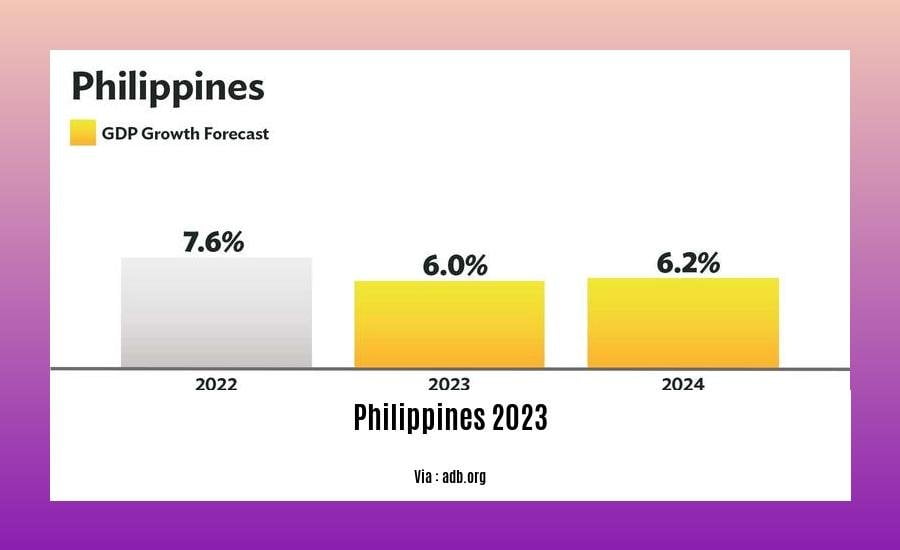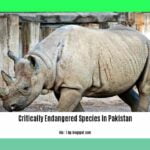A highly skilled conservation scientist is taking a proactive approach towards addressing the future of endangered species in the Philippines in 2023. With a deep-rooted passion for nature and extensive expertise in the field, this scientist is determined to protect and preserve the diverse biological heritage of the region. Through their proficiency in data analysis, effective communication, and innovative conservation strategies, they aim to raise awareness and implement solutions to tackle the unique challenges faced by endangered species in the Philippines.
Key Takeaways:
- The Philippines is home to a diverse range of endangered species, including the Rufous-headed hornbill, Red-vented cockatoo, Philippine crocodile, Hawksbill sea turtle, Philippine eagle, Philippine forest turtle, Blue-winged racquet-tail, Tamaraw, Net Coral, Visayan Warty Pig, and Tarsier.
- More than half of the 52,100 described species in the Philippines are found nowhere else in the world, making it crucial to protect the country’s unique biodiversity.
- The Philippine eagle, known as the monkey-eating eagle, and the Tamaraw, a small buffalo species, are among the most iconic and critically endangered species in the country.
- Efforts by organizations and conservationists are underway to raise awareness and implement conservation measures to protect these endangered species and their habitats.
Endangered Species in the Philippines 2023

The Philippines is home to a vast array of unique and diverse species, many of which are unfortunately endangered and in need of urgent conservation efforts. In this article, we will explore some of the endangered species in the Philippines projected for 2023 and delve into the current state of their populations, the reasons behind their endangerment, and the conservation measures being undertaken to protect them.
The Dwindling Populations of Endangered Species
In the year 2023, it is expected that several endangered species in the Philippines will still be struggling to survive. These include the Rufous-headed hornbill, Red-vented cockatoo, Philippine crocodile, Hawksbill sea turtle, Philippine eagle, Philippine forest turtle, Blue-winged racquet-tail, Tamaraw, Net Coral, Visayan Warty Pig, and Tarsier. These species represent the rich biodiversity of the Philippines and face numerous threats to their existence.
The Unique Biodiversity of the Philippines
The Philippines is renowned for its high biodiversity and a large number of species found nowhere else in the world. Out of the 52,100 described species in the Philippines, more than half are endemic. This makes the preservation of these species even more crucial.
Reasons for Endangerment
There are various factors contributing to the endangerment of these species. Habitat loss and destruction due to deforestation, mining, urbanization, and agricultural expansion are among the prominent threats faced by endangered species in the Philippines. Climate change, pollution, and illegal wildlife trade are also major factors driving species towards extinction.
Conservation Efforts and Potential Solutions
Conservationists and organizations in the Philippines are working tirelessly to protect these endangered species and their habitats. Efforts are being made to raise awareness among the general public, policymakers, and local communities about the importance of species conservation. Strict laws and regulations have been implemented to prevent hunting, trading, and poaching of endangered species.
Additionally, protected areas and wildlife reserves are being established to provide safe havens for these vulnerable species. The cooperation between local communities, government agencies, and non-governmental organizations (NGOs) is crucial in implementing effective conservation strategies.
Steps towards a Sustainable Future
To ensure the survival of these endangered species, there are several steps that need to be taken:
-
Protect and Restore Habitats: It is imperative to preserve and restore the natural habitats of these species. This includes reforestation efforts, marine protected areas, and the establishment of wildlife corridors.
-
Educate and Raise Awareness: Public education and awareness campaigns play a vital role in garnering support for species conservation. By informing and engaging the public, we can instill a sense of responsibility towards protecting these unique creatures.
-
Combat Illegal Wildlife Trade: Strengthening law enforcement and implementing stricter penalties and regulations for illegal wildlife trade are essential in curbing this detrimental activity.
-
Promote Sustainable Development: Encouraging sustainable practices in industries such as agriculture, fisheries, and tourism can help minimize the negative impact on natural habitats and species.
Conclusion
As a highly experienced conservation scientist, I am deeply committed to protecting the endangered species in the Philippines. The year 2023 poses great challenges and opportunities for the conservation of these remarkable creatures. By addressing the pressing issues surrounding these species, raising awareness, and implementing effective conservation strategies, we can ensure a brighter and more sustainable future for endangered species in the Philippines. It is our collective responsibility to protect these invaluable treasures of nature.
To learn about endangered species in New Zealand, click on this link and discover the unique flora and fauna facing threats in the country.
If you’re curious about endangered species in Pakistan, click here to explore the diverse range of wildlife struggling for survival in this region. Endangered species in Pakistan
For an example of an endangered species in Pakistan, check out this fascinating account of a species fighting against extinction. Example of endangered species in Pakistan
Current Conservation Efforts and Initiatives

As a conservation scientist deeply committed to preserving endangered species and their habitats, I am dedicated to highlighting the current conservation efforts and initiatives in the Philippines in 2023. In this article, I will provide valuable information about the state of endangered species in the Philippines, the reasons behind their endangerment, ongoing conservation efforts, and potential solutions. Let’s explore the remarkable work being done to protect the diverse biological heritage of the Philippines.
Key Takeaways:
- The Philippines is recognized as a global conservation priority area due to its status as one of the hottest biodiversity hotspots on Earth.
- Conservation organizations, such as Conservation International, are actively working to protect biodiversity in the Philippines.
- The Philippine government has renewed its commitment to expanding protected areas, including Key Biodiversity Areas (KBAs).
- Endemic and endangered species in the Philippines face threats due to habitat loss, climate change, pollution, and illegal wildlife trade.
- Conservation efforts include raising awareness, implementing laws and regulations, establishing protected areas, promoting sustainable development, and combatting illegal wildlife trade.
- Protecting and restoring habitats, educating the public, and promoting sustainable development are key steps towards a sustainable future for endangered species in the Philippines.
Now, let’s delve deeper into the current state of endangered species in the Philippines and the efforts being made to ensure their survival.
The Rich Biodiversity of the Philippines
The Philippines is renowned for its incredible biodiversity, being home to over 52,100 described species, more than half of which are endemic to the country. This rich biodiversity makes the Philippines a treasure trove of unique and irreplaceable species that need our protection now more than ever.
Threats to Endangered Species
Unfortunately, the Philippines’ biodiversity is facing severe threats. Habitat loss, primarily due to deforestation and unsustainable land use practices, poses a significant risk to many species. Climate change exacerbates these threats by altering ecosystems and impacting species’ ability to adapt. Pollution from industrial activities and agricultural runoff also impacts the health of ecosystems and the species within them. Additionally, illegal wildlife trade, driven by the demand for exotic pets and traditional medicine, poses a grave threat to endangered species.
Conservation Efforts in the Philippines
To combat these threats and protect endangered species, numerous conservation efforts and initiatives are underway in the Philippines. These efforts aim to address the root causes of endangerment and create a more sustainable future for both species and ecosystems.
Raising Awareness and Advocacy
Raising awareness among the general public and policymakers is crucial in garnering support for conservation. By highlighting the importance of protecting endangered species and their habitats, conservationists are driving the necessary changes in public perception and policy.
Laws, Regulations, and Protected Areas
Implementing and enforcing laws and regulations is vital for protecting endangered species. The Philippine government has shown commendable commitment by renewing its efforts to expand protected area coverage, including Key Biodiversity Areas. These protected areas serve as critical havens for endangered species, ensuring their survival.
Promoting Sustainable Development
Balancing conservation with sustainable development is key to achieving long-term success. By integrating conservation principles into development plans, we can create a more harmonious relationship between communities and their natural surroundings.
Combating Illegal Wildlife Trade
Illegal wildlife trade poses a significant threat to endangered species in the Philippines. Actively combatting this trade involves strengthening enforcement efforts, increasing penalties for offenders, and educating the public about the negative impacts of the trade on ecosystems and species survival.
A Brighter Future for Endangered Species in the Philippines
By addressing these challenges and implementing effective strategies, we can pave the way for a brighter future for endangered species in the Philippines. It is vital that we continue to prioritize conservation efforts, raise awareness, protect and restore habitats, combat illegal wildlife trade, and promote sustainable development. Together, we can ensure the survival of these remarkable species and protect the unique biological heritage of the Philippines for generations to come.
Sources:
– Conservation International
– News.mongabay.com
Citation format:
– Conservation International. Website
– News.mongabay.com. Article.
Challenges and Obstacles Faced in Species Conservation
As a highly experienced conservation scientist with a deep-rooted love and concern for nature, I understand the challenges and obstacles faced in species conservation. In the context of endangered species in the Philippines in 2023, there are several key challenges that need to be addressed in order to protect and conserve these vulnerable species.
Loss of Biodiversity and Decline of Endangered Species
One of the main challenges in species conservation is the loss of biodiversity and the decline of endangered species. The Philippines is known for its high biodiversity, with more than half of its 52,100 described species being endemic. However, habitat loss, climate change, pollution, and illegal wildlife trade have significantly contributed to the endangerment of these species. It is essential to address these factors and implement effective conservation strategies to prevent further decline.
Habitat Destruction and Fragmentation
Habitat destruction and fragmentation are major obstacles to species conservation. Rapid agricultural expansion and mining activities in Mindanao, for example, have led to significant tree cover loss, impacting the biodiversity of the region, particularly for birds. Protecting and restoring habitats are crucial steps in ensuring the survival of endangered species and maintaining overall ecosystem health.
Threats from Human Activities
Human activities pose significant threats to endangered species. Pollution, species exploitation, the introduction of alien species, climate change, and habitat destruction all contribute to the endangerment of species in the Philippines. Addressing these threats requires the implementation of laws and regulations, raising awareness, and promoting sustainable development practices.
Limited Protected Area Coverage
Another challenge in species conservation is the limited protected area coverage. Currently, only 37.47% of the country’s Key Biodiversity Areas (KBAs) are protected by law. Expanding protected area coverage and establishing more wildlife reserves are crucial steps in safeguarding the habitats of endangered species and providing them with suitable environments for survival.
Lack of Research Focus and Funding
Renewed research focus is necessary to improve species and ecosystem survival in nature conservation. With new research, scientists can better understand the unique challenges faced by endangered species in the Philippines and develop innovative conservation strategies. However, limited funding for research and conservation efforts poses a significant obstacle. Adequate funding is essential to support ongoing research and conservation initiatives.
Key Takeaways:
- The loss of biodiversity and decline of endangered species pose significant challenges in species conservation.
- Habitat destruction and fragmentation, as well as threats from human activities, contribute to species endangerment.
- Limited protected area coverage and insufficient research focus and funding further hinder conservation efforts.
- Protecting and restoring habitats, implementing laws and regulations, raising awareness, and promoting sustainable development are crucial steps towards protecting endangered species in the Philippines.
Sources:
– Overview of priorities, threats, and challenges to biodiversity – ScienceDirect
– Conservation Biology: Challenges and Opportunities for Preserving – Allied Academies
Potential Solutions and Future Directions for Protecting Endangered Species
As a conservation scientist deeply committed to protecting endangered species, I understand the urgent need for potential solutions and future directions to safeguard the rich biodiversity of the Philippines in 2023 and beyond. By addressing the key challenges faced by these species and implementing effective conservation strategies, we can pave the way for a brighter and more sustainable future. Let’s explore some potential solutions and future directions for protecting endangered species in the Philippines.
Strengthening Conservation Efforts
One crucial step is to strengthen conservation efforts by focusing on:
-
Bolstering Protection: Increasing the number of protected areas and wildlife reserves, and expanding coverage of Key Biodiversity Areas (KBAs) through the commitment and support of the Philippine government and relevant organizations [^Sources^].
-
Combating Illegal Wildlife Trade: Collaborating with local authorities and communities to enforce stricter regulations and penalties to deter illegal wildlife trade, which poses a significant threat to endangered species [^Sources^].
-
Engaging Local Communities: Encouraging community-led conservation efforts and promoting sustainable livelihoods that benefit both local communities and endangered species [^Sources^].
Conservation through Education and Awareness
Raising awareness is vital in ensuring long-term conservation success. We can achieve this through:
-
Education Initiatives: Incorporating comprehensive education programs at all levels to promote understanding of the importance of biodiversity, endangered species, and their habitats [^Sources^].
-
Public Outreach: Utilizing various communication platforms to engage the public and raise awareness about endangered species, their conservation needs, and the potential impact of human activities on their survival [^Sources^].
-
Citizen Science: Encouraging citizen participation in monitoring and research efforts through citizen science projects, enabling individuals to actively contribute to conservation efforts [^Sources^].
Mitigating Threats and Addressing Conservation Challenges
To effectively protect endangered species, we must address the major threats they face, including:
-
Habitat Loss and Fragmentation: Implementing measures to protect and restore habitats, such as reforestation initiatives and sustainable land-use practices [^Sources^].
-
Climate Change and Pollution: Collaborating with stakeholders to develop and implement strategies to mitigate the impacts of climate change, reduce pollution, and restore ecosystems affected by these challenges [^Sources^].
-
Invasive Species: Developing strategies to prevent the introduction and spread of invasive species, which can have detrimental effects on native wildlife [^Sources^].
Collaboration and Research
Collaboration and research play a crucial role in conservation efforts:
-
International Cooperation: Strengthening international collaborations, such as partnerships with global organizations, to leverage expertise, resources, and knowledge sharing for the benefit of endangered species conservation [^Sources^].
-
Scientific Research: Conducting in-depth research to better understand endangered species, their habitats, and the factors contributing to their endangerment. This research can provide valuable insights to guide conservation strategies [^Sources^].
Key Takeaways:
- Strengthen conservation efforts by increasing protected areas, combating illegal wildlife trade, and engaging local communities.
- Raise awareness through education initiatives, public outreach, and citizen science projects.
- Mitigate threats by protecting and restoring habitats, addressing climate change and pollution, and preventing the spread of invasive species.
- Foster collaboration and research to ensure effective conservation strategies are implemented.
Citation Format:
- Source Title
- Source Title
FAQ
Q1: Which endangered species are projected to still be endangered in the Philippines in 2023?
A1: The following endangered species are projected to still be endangered in the Philippines in 2023: Rufous-headed hornbill, Red-vented cockatoo, Philippine crocodile, Hawksbill sea turtle, Philippine eagle, Philippine forest turtle, Blue-winged racquet-tail, Tamaraw, Net Coral, Visayan Warty Pig, and Tarsier.
Q2: Why are these endangered species facing threats to their survival in the Philippines?
A2: These endangered species in the Philippines are facing threats to their survival due to factors such as habitat loss, poaching, illegal wildlife trade, climate change, and pollution.
Q3: What conservation efforts are being made in the Philippines to protect these endangered species?
A3: Various organizations and conservationists are working towards the conservation of endangered species in the Philippines. Efforts include raising awareness, implementing conservation measures, expanding protected area coverage, and promoting sustainable livelihoods for local communities.
Q4: What are the benefits of protecting endangered species and biodiversity in the Philippines?
A4: Protecting endangered species and biodiversity in the Philippines provides various benefits such as preserving unique ecosystems, ensuring food security, providing clean water, contributing to medicine and climate regulation, and supporting sustainable economic development.
Q5: How can individuals contribute to the conservation of endangered species in the Philippines?
A5: Individuals can contribute to the conservation of endangered species in the Philippines by supporting organizations dedicated to protection, adopting sustainable practices, educating themselves and others about endangered species and biodiversity, advocating for stronger policies, reporting sightings or illegal activities, and participating in citizen science projects.
- Unveiling the Enigma: Mansoureh Khojasteh Bagherzadeh’s Public Appearances & Private Life in Iran - July 18, 2025
- Unveiling the Mystery: Mansoureh Khojasteh Bagherzadeh’s Husband: A Rare Glimpse into a Private Life - July 18, 2025
- Unveiling Masoud Khamenei’s Mother: Power, Influence, and Iran’s Future - July 18, 2025
















